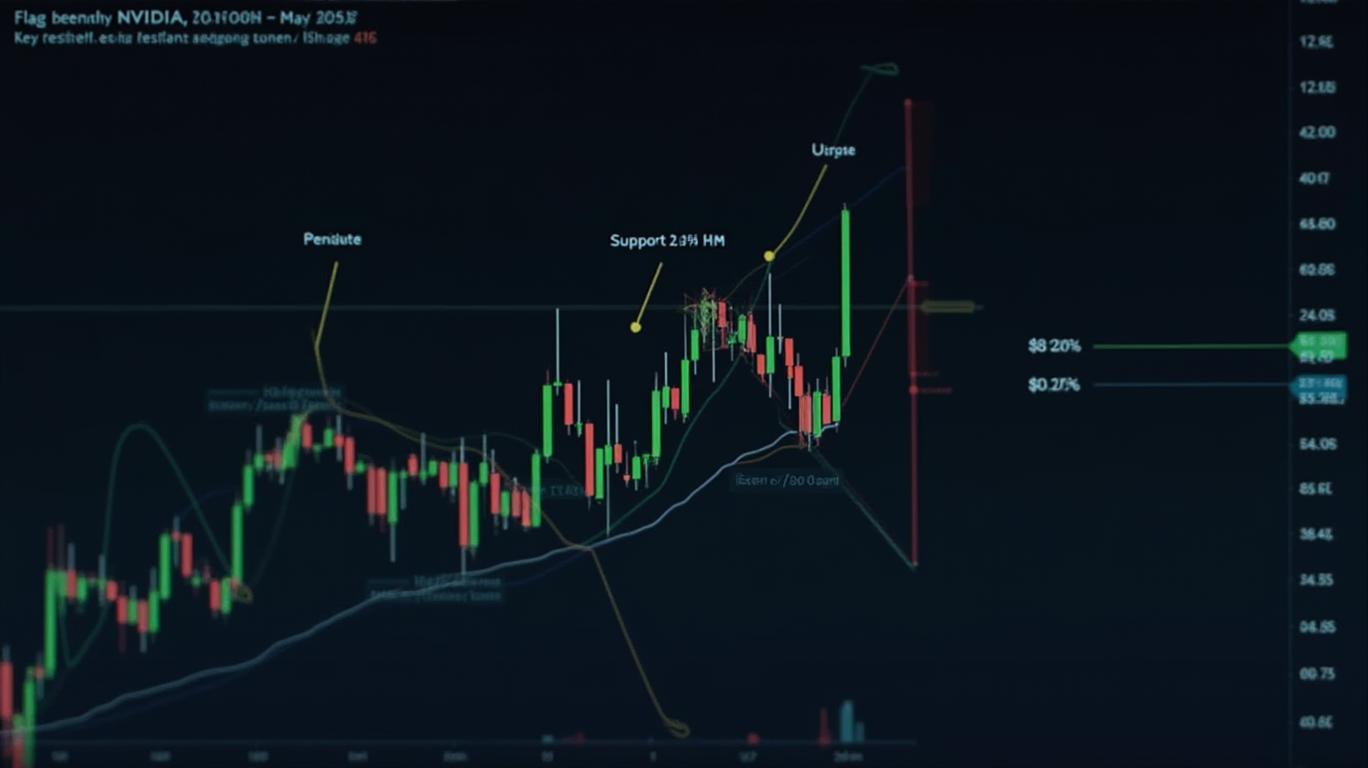Nvidia's $4 Trillion Quest: 3 Reasons It Could Happen by Year's End
Monday, Nov 25, 2024 1:11 am ET
Nvidia (NVDA), the AI chip superstar, continues to stun the market with its remarkable performance. As the company's valuation soars, investors are wondering if it can reach the monumental milestone of $4 trillion by the end of the year. This article explores three reasons why Nvidia's $4 trillion dream could become a reality.
First, supply constraints are the biggest barrier to Nvidia's growth, but they also present an opportunity. Despite the company's eye-popping revenue growth, demand for its products continues to outstrip supply. Nvidia's chief financial officer, Colette Kress, described demand for the new Blackwell platform as "staggering" and demand for the legacy Hopper platform as "exceptional." This mismatch between supply and demand is a significant factor driving Nvidia's growth.
Second, Nvidia has successfully fended off competition from rivals like AMD and Intel. Despite the launch of competing AI accelerators, Nvidia's data center revenue run rate of $120 billion and its CUDA software library give it a significant competitive advantage. Nvidia's ability to maintain its market leadership position is crucial for reaching the $4 trillion valuation.
Third, Nvidia's strategic partnerships and acquisitions have been instrumental in its impressive growth. The company's collaboration with Microsoft to develop AI supercomputers, along with its acquisition of Mellanox Technologies, further solidifies its position as a leader in the AI market. These partnerships and acquisitions diversify Nvidia's revenue streams and open up new markets, contributing to its growth trajectory.
In conclusion, Nvidia's potential to reach $4 trillion by the end of the year is supported by strong demand for AI chips, steady revenue growth, and a robust pipeline of new products. The company's strategic partnerships and acquisitions further cement its position as a leader in the AI market. As Nvidia continues to innovate and form strategic alliances, it remains well-positioned to achieve this remarkable milestone.
First, supply constraints are the biggest barrier to Nvidia's growth, but they also present an opportunity. Despite the company's eye-popping revenue growth, demand for its products continues to outstrip supply. Nvidia's chief financial officer, Colette Kress, described demand for the new Blackwell platform as "staggering" and demand for the legacy Hopper platform as "exceptional." This mismatch between supply and demand is a significant factor driving Nvidia's growth.
Second, Nvidia has successfully fended off competition from rivals like AMD and Intel. Despite the launch of competing AI accelerators, Nvidia's data center revenue run rate of $120 billion and its CUDA software library give it a significant competitive advantage. Nvidia's ability to maintain its market leadership position is crucial for reaching the $4 trillion valuation.
Third, Nvidia's strategic partnerships and acquisitions have been instrumental in its impressive growth. The company's collaboration with Microsoft to develop AI supercomputers, along with its acquisition of Mellanox Technologies, further solidifies its position as a leader in the AI market. These partnerships and acquisitions diversify Nvidia's revenue streams and open up new markets, contributing to its growth trajectory.
In conclusion, Nvidia's potential to reach $4 trillion by the end of the year is supported by strong demand for AI chips, steady revenue growth, and a robust pipeline of new products. The company's strategic partnerships and acquisitions further cement its position as a leader in the AI market. As Nvidia continues to innovate and form strategic alliances, it remains well-positioned to achieve this remarkable milestone.



_23f7f7eb1749627884277.png)






